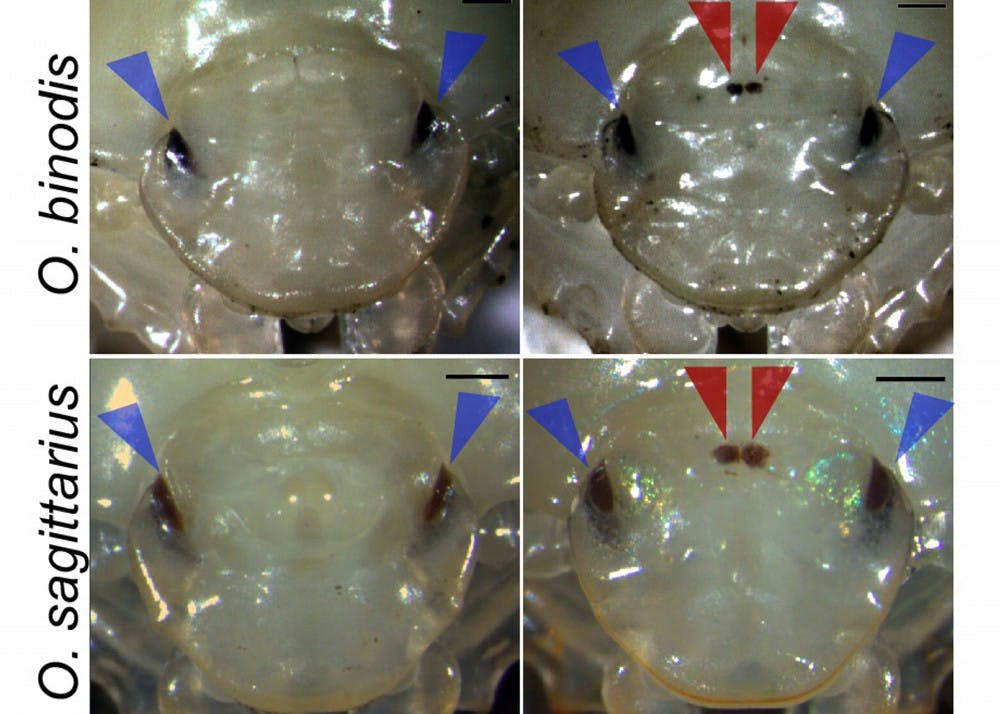Beetles from one IU lab have been compared to Frankenstein's monster as researchers created a third eye in the middle of one beetle's head.
Researcher Eduardo Zattara and biology professor Armin Moczek study beetles, focusing on beetle horns and how genes influence different horn types. During one study, Zattara said they found something different, a third functional eye in the middle of the beetle’s head rather than a horn.
“We weren’t looking for the eye,” Zattara said. “We just bumped into this phenomenon.”
By injecting RNA, a molecule related to how genes are expressed, they were able to keep certain genes from appearing in the beetle, Zattara said. This allowed them to repeat the same process in other beetle larva, which take three or four years to develop, and produce a beetle with a third eye in the middle of its head.
“Genes are just like tools,” Zattara said. “They combine in certain ways to do certain things.”
To test the eye’s functionality, Zattara said they manipulated the genes to remove the normal eye and shined a light directly at the beetle. He said the reaction of this eye was slower, but the beetle still shied away from the light.
“The beetle will stop, lower its head and walk away,” Zattara said, adding that this showed the eye did work, although not quite with the same level of functionality as its normal eyes.
Hannah Busey, a senior in biology and neuroscience, said she has been working in the Moczek lab since she was a senior at Bloomington High School North.
“I was mainly running behavioral trials,” Busey said.
Busey helped inject the beetles with the serum that produced the extra eye as well as run these light trials to test the eye’s functionality.
The appearance of the larva is similar to white gummy bears, and the additional eye is distinguished as a brown dot in the middle, Zattara said.
The focus of this project is to measure the beetle's growth from when it is an egg. Researchers hope the comparison of the three-eyed beetle to other beetles will help them understand how they have evolved.
“It’s hard to look at evolution when you’re comparing a fly and a mouse,” Zattara said.
This discovery will give better insight into how how eyes and heads are made in general, bringing new understanding to development, Zattara said.
The growth of this eye could help with medical advancements in understanding how complex organs grow and integrate into the body, Moczek said in a Nov. 16 press release. He said this could lead to the development of artificial organs for transplant.
Zattara also said one of the main interests that stems from this study is whether this is a phenomenon that can happen in other organisms rather than just beetles. He said they are planning to work with other labs in the research community to find out.
“It’s proof that it takes this little to get a new structure in a new place,” Zattara said.




